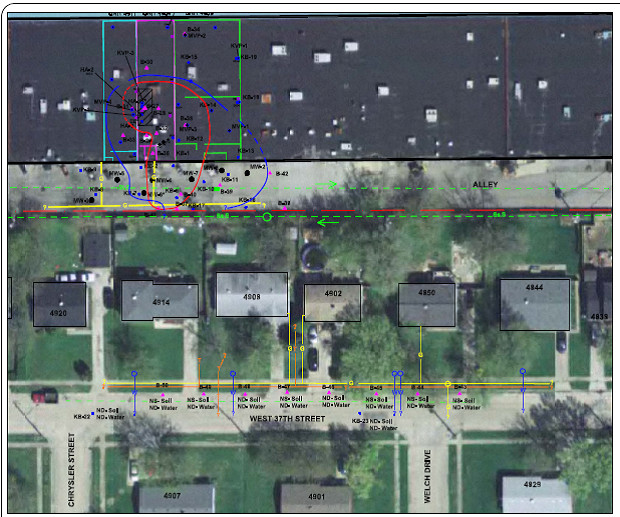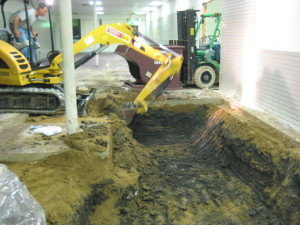Challenge
Soil and groundwater investigations had indicated high concentrations of chlorinated solvents beneath a former dry cleaner and two adjacent units within an active shopping center. Indoor air and sub-slab vapor intrusion sampling demonstrated extremely high levels of tetrachloroethylene (PCE) exceeding acute prompt-action guidelines in the three affected units. Additionally, impacts were present in soil and groundwater in the alley behind the dry cleaner, adjacent to residences. Groundwater monitoring indicated that the residences were downgradient of the site, lending additional urgency to the removal of the source area. Due to the potential health risks, IDEM requested Mundell to design a remediation plan to promptly remove the impacted source material underneath the units and in the alley. Complicating factors included the need to conduct the work indoors without disturbing the adjacent tenants and the elevated soil concentrations which exceeded potentially hazardous levels. In the alley, a storm sewer and gas line posed a potential constraint to remediation activities.
Action
Mundell devised a plan to remove the inside soil using a mini-excavator and load the soil into roll-off boxes before removal through a widened entrance to the alley. Mundell utilized a geophysical survey and follow-up sampling to show that impacts followed utilities as a preferential pathway in one of the units and used this information to focus remediation activities. Excavation within the units was conducted overnight to minimize disturbance. Certain areas were hand-excavated to avoid damage to load-bearing structures. Constant air monitoring was completed to monitor risk to the excavation workers. The areas containing the highest levels of impacts were treated in place with a quick acting oxidant, mixed with the excavator and then covered overnight before resampling to avoid the generation of hazardous waste. Excavation in the alley included removal of highly impacted soil adjacent to and underneath the storm sewer. Removal of soil under the storm sewer proceeded in sections and each section was backfilled to stabilize the storm sewer before proceeding.
Results
Soil confirmation results demonstrated that the excavation removed the vast majority of source material, including many locations that would not have been practically accessible with other methods.

Project Map




